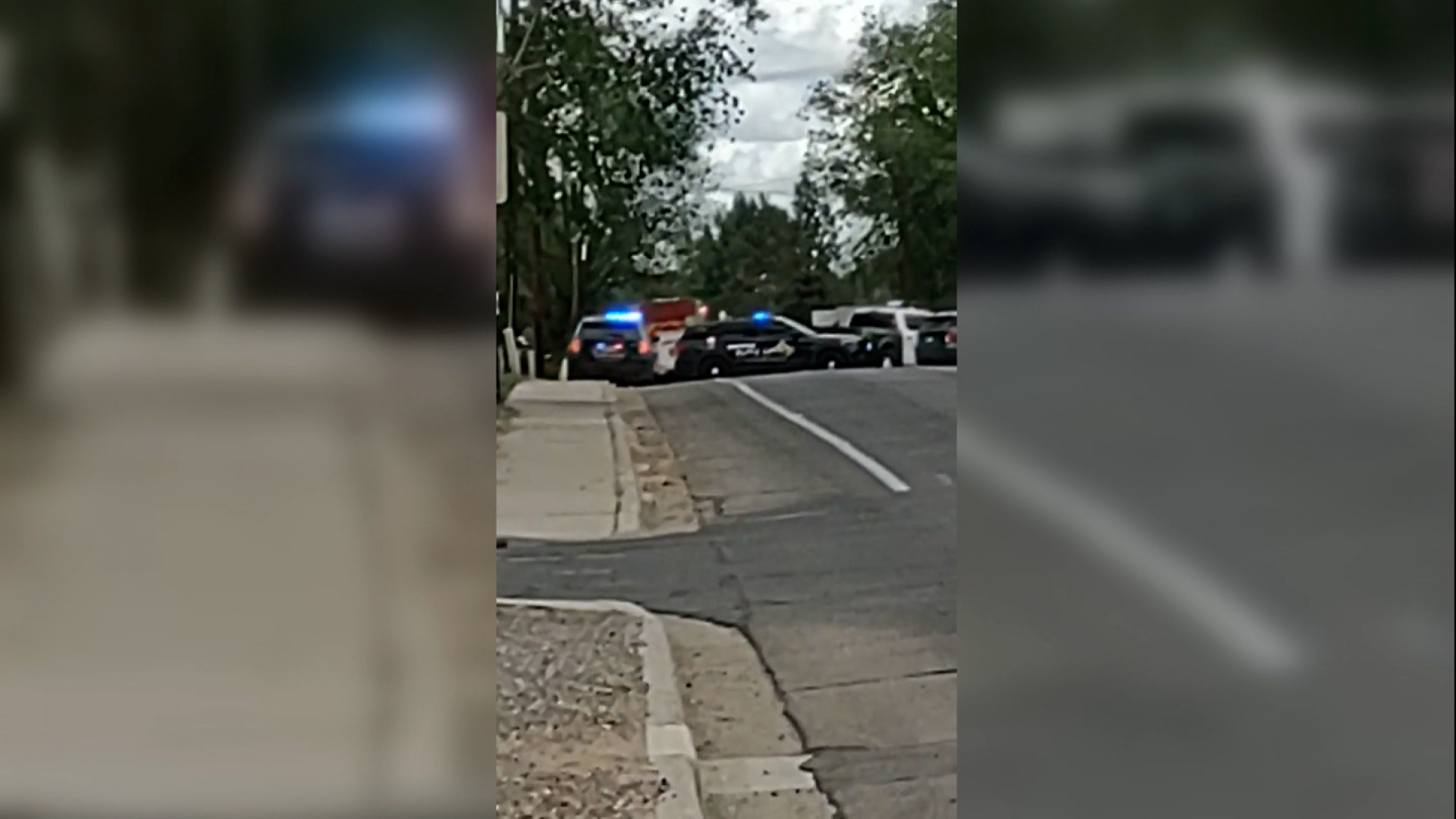Radio collars to GPS: Wildlife officials hope tech will give them an edge as Black Bear numbers rise
Jul 20, 2017, 11:20 PM

WASATCH MOUNTAINS – Deep in the mountains in Spanish Fork Canyon, a group of biologists trudged through snow, mud and thick brush. Several in the group were out of breath and grasping branches for support, as they climbed up and down the slick slopes around the draw, trying to find the winter den of a local bear.
“See that point?” Dennis Southerland, a wildlife biologist with the Division of Wildlife Resources, asked as he pointed to rock outcropping on a nearby hill. “She’s probably somewhere over there.”
Southerland put a collar around this particular bear’s neck a few summers before, when she wandered in to one his metal barrel traps. Now he finds her each spring to check her health and see if she has cubs.
“We locate them from an airplane using telemetry equipment,” Southerland said. “Then we come up like we did today and find them.”
It’s a touchy process. Biologists try to find the bear from the airplane, then use an antenna to pick up the radio signal and zero in on the ground. The equipment emits a soft beeping sound to indicate the direction of the collar and biologists say it’s a little like playing the game “hot and cold.”
“It’s a lot of trying to narrow it in and determine where the loudest signal is coming from,” said Riley Peck, DWR’s regional wildlife program manager. “It’s a challenge but it’s important information. It’s necessary to get the data, so a lot of effort is put in.”
Peck has been on so many “bear dennings”, he’s lost count. He said this kind of back and forth trudging is not unusual when you are looking for a small hole in a massive forest.
“The hikes are always tough. They don’t den in easy locations, that’s just the nature of bears.” Peck said, adding that this hike was easier than many, “There isn’t a ton of snow on the ground. We didn’t need to go on a snowmobile first and then snowshoe in. The terrain is easier to hike on, even though it’s still steep.”
Four miles later, Peck called the march to a halt, as he explained the constantly bouncing signal was a sign the bear was up and moving. The biologists didn’t have a chance of catching up, as bears have better hearing and smell than humans.
“It’s frustrating, we hiked all day and didn’t see anything.” Peck said, adding that this happens every few years. “There’s a million things that can wake her up and get her to move. Most of the snow is gone. It’s warmer this year. She probably doesn’t have cubs this year, so she doesn’t have to worry about leaving them behind.”
Darren Deblois, the mammals coordinator for the DWR, said finding the perfect time to approach the den is a struggle for biologists every year. If they hike too early, they have to compete with snow and winter debris. If they go too late, the bear might be out of hibernation.
A week later, DWR employees were out again, this time tracking down a bear near Rock Canyon in Provo. Once again, they struggled with a bouncing signal, as it leaped between the walls of the canyon. In this case, biologists explained it was the topography that was throwing their equipment off.
“This is an art,” said DWR biologist Dale Liechty. “You get into a canyon like this with all these ledges and the signal will bounce. It’s just the way the rock formations are.”
Along with his location gear, Liechty was hefting a new collar through the canyon. Most of Utah’s bears are still sporting Very High Frequency (VHF) radio collars, like the one they were tracking. But this year, biologists have been trying to swap them out with GPS versions. Liechty explained the VHF collars are fickle to use but cheaper, several hundred dollars versus the thousands that GPS collars cost. That price tag only recently went down, finally making it possible for DWR to afford a few for their biologists.
“We can get more of them and they can give us an exact pinpoint location,” Peck said. “It’s less of a guessing game. Really, it’s a luxury and makes this easier.”
A few hours later and the group realized this bear was also up and running. She’s about two years old and quickly growing. Worried that the bear’s collars would be tight as she continued to grow, Liechty returned to the canyon a few months later and loaded a metal barrel trap with donuts every morning for several weeks. On June 10, the Rock Canyon bear finally took the bait and DWR employees gathered to help replace her collar.
“Wow. She’s beautiful,” one woman said, as the bear lunged at the gate and growled.
They worked quickly. Biologists at one end of the trap distracted the bear as another used a long stick with a needle at the end to inject a concoction of sleeping drugs into the animal. She was asleep in minutes. They pulled her out carefully and cradled the bear’s head as they pulled off one collar and placed another.
As they worked, Peck explained the collar has to be tight enough it doesn’t get caught on the bushes and trees around her, but loose enough she has room to grow.
When a bear is found with cubs, Deblois said biologists will often weigh the young bears, take hair samples and measure their legs for an approximate age. That data helps the DWR understand how the population is faring. More cubs mean the bears are doing well and the population is growing. Over the last few years, biologists have counted quite a few new offspring.
“All of our data looks like we’ve been up roughly six percent in years past,” Peck said.
He said there are other methods to gage a predator’s population but none are as affordable and effective as bear collars.
“They are secretive. They are hard to see,” Peck said. “A deer you can go to the side of the mountain and see it. If you can’t visually see [bears] you have to come up with other ways to get population estimates. There have been other studies, but currently bear denning and collar data are our best method.”
The data will then help the DWR determine if bears are a danger to livestock or campers, if they should increase the number of hunting tags, or if the bear population is struggling and needs help from the division.
“Bears are wonderful and we want to have a healthy and thriving population,” Peck said.
In this case, the female bear was too young to have cubs. Biologists guessed her weight at about 100 pounds, a number expected to double by the time she reaches four. After replacing her collar, a reversal drug had the bear up and running back into the trees in a matter of minutes.
The process is a fickle one. Biologists work through bad weather, unpredictable animals and fickle equipment. Throughout it all, Liechty didn’t bat an eye. He said after a couple of years, biologists come to expect a few problems.
“We’ve done it enough that it’s just part of the game,” Liechty said. “We can’t control Mother Nature and we don’t want to.”
















